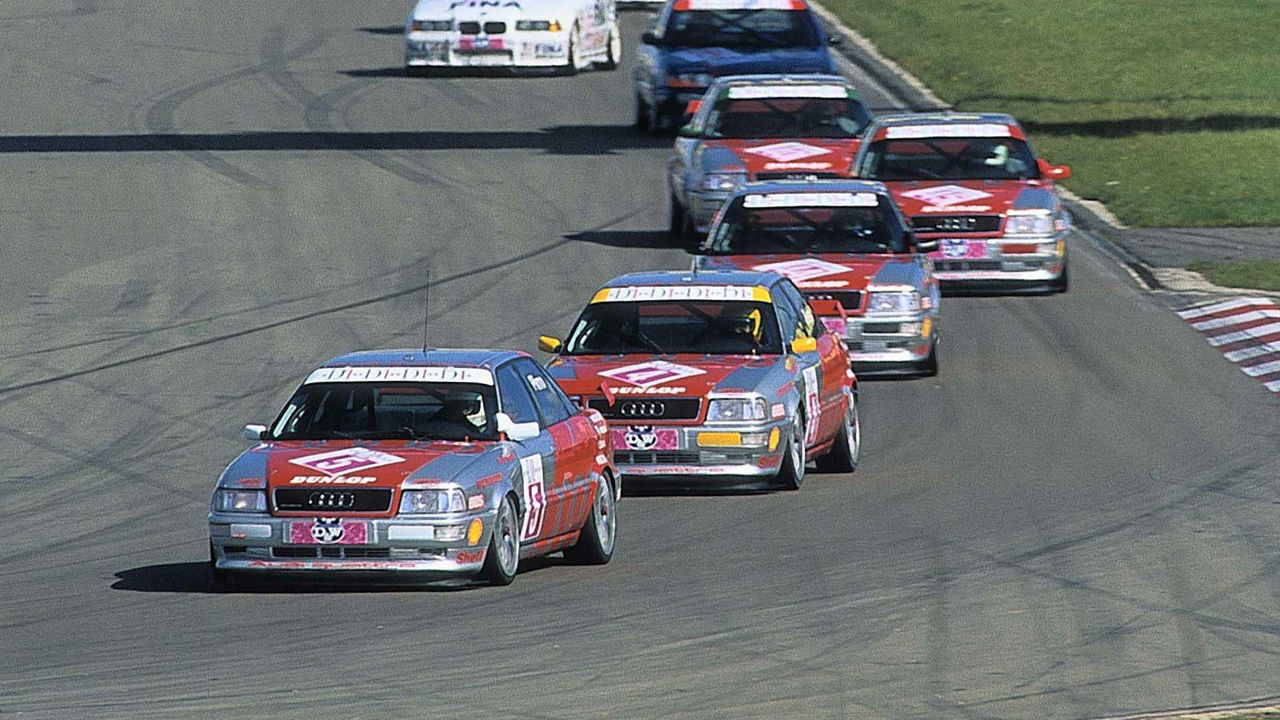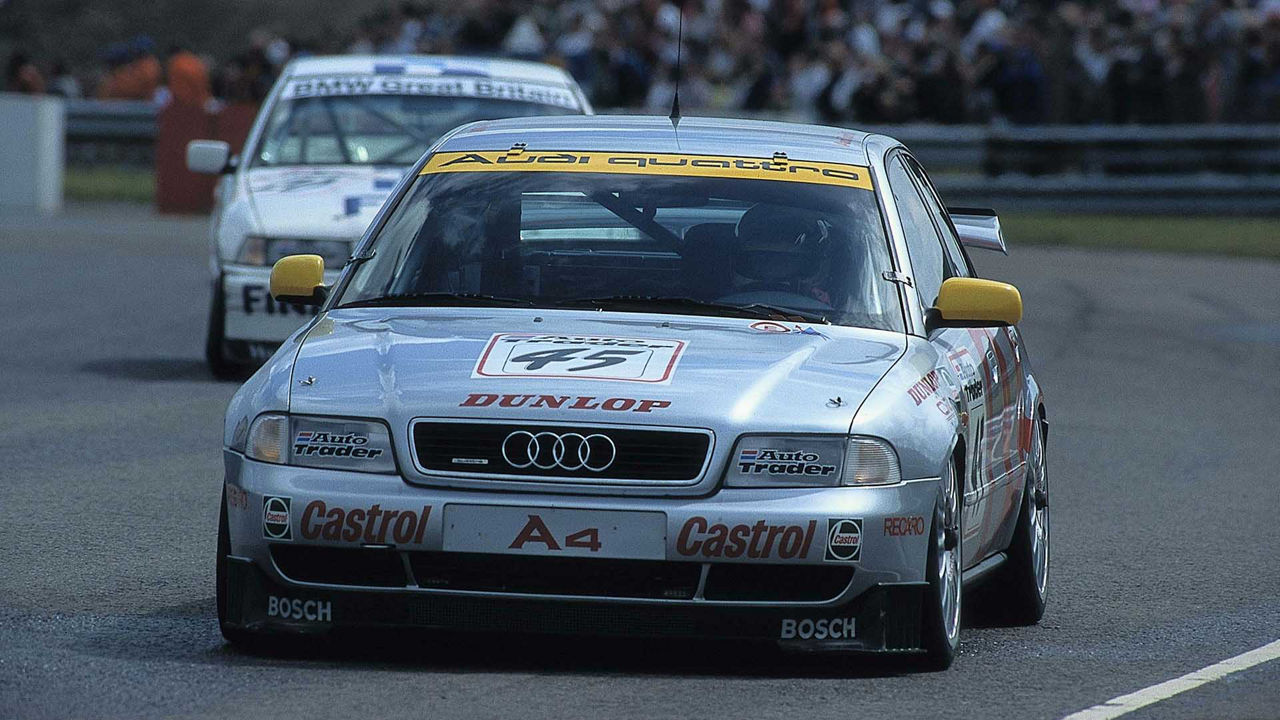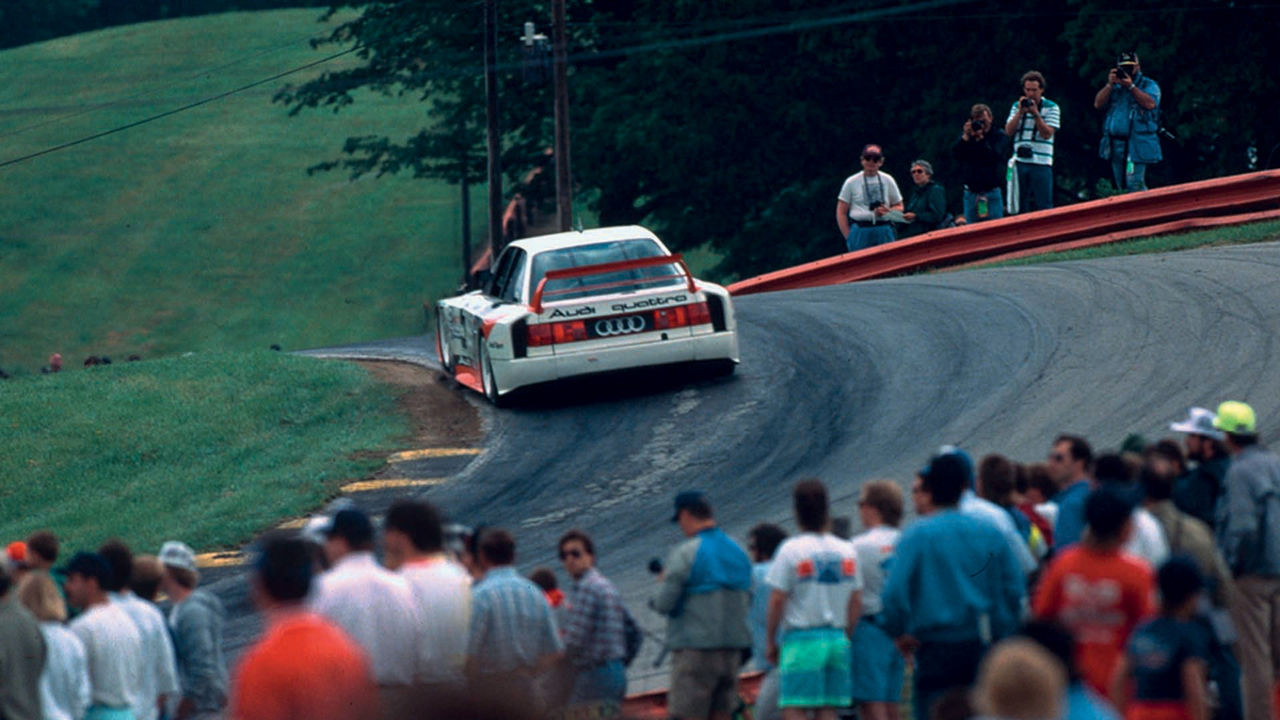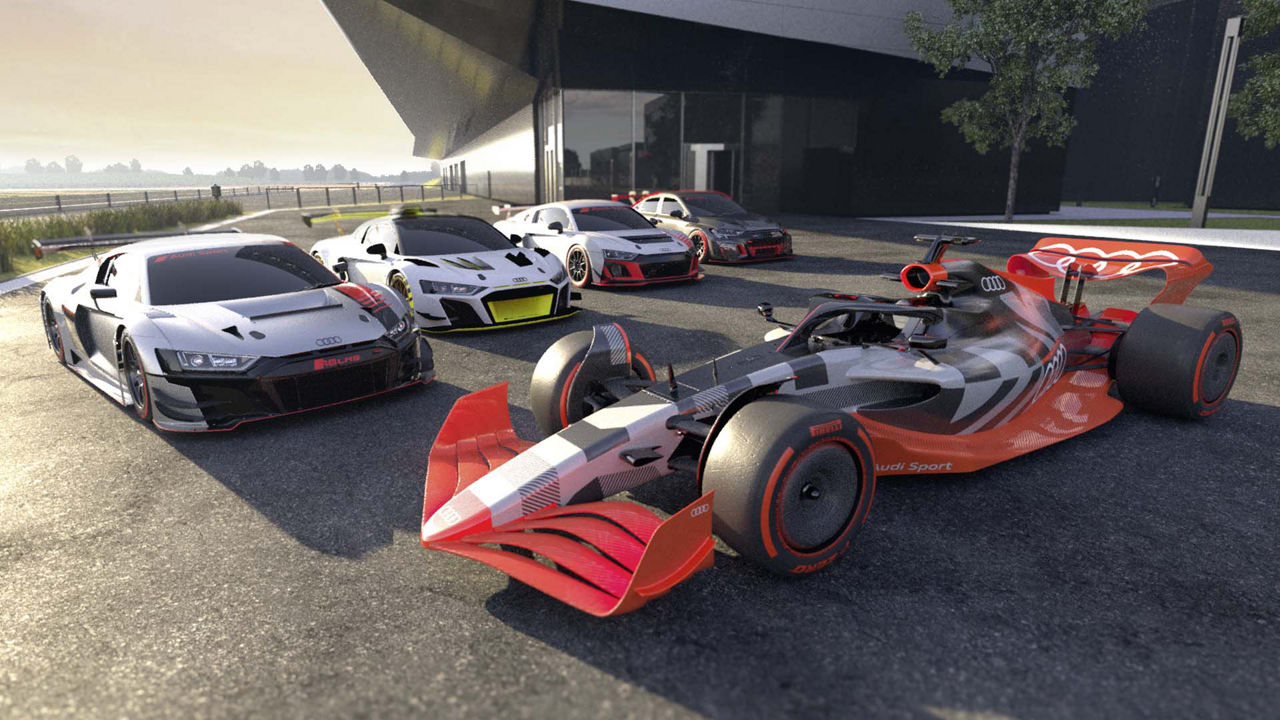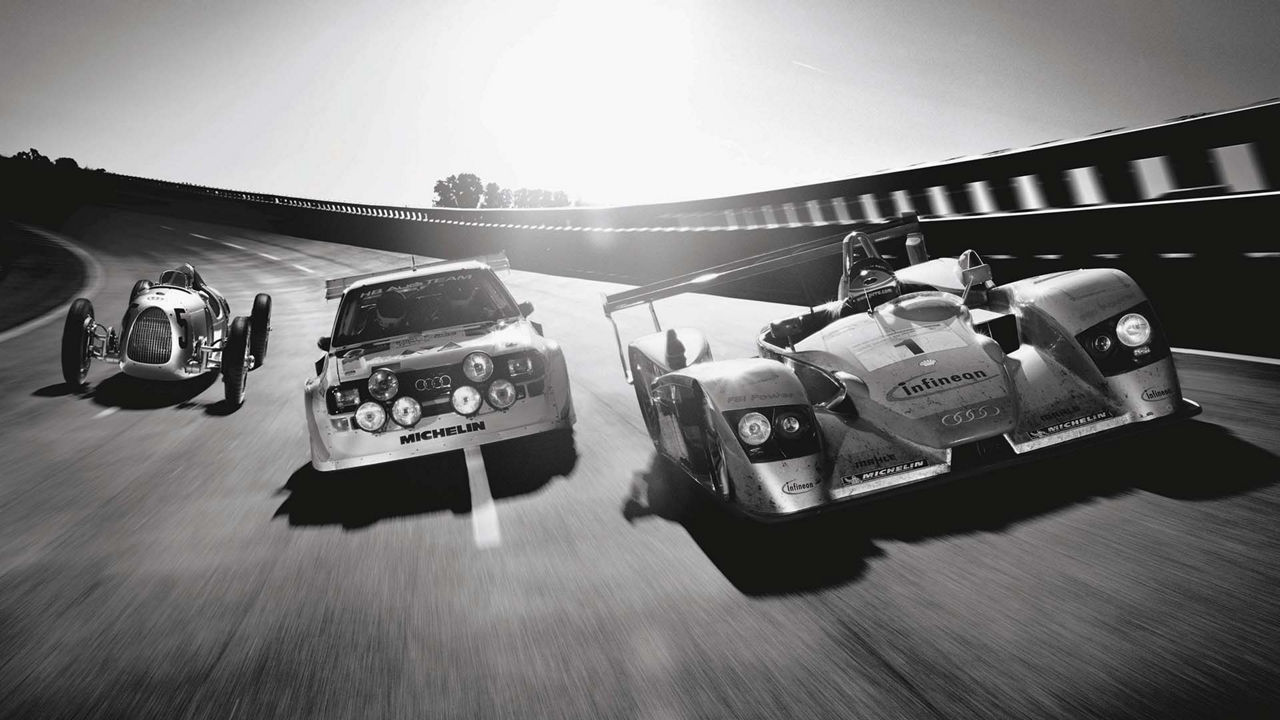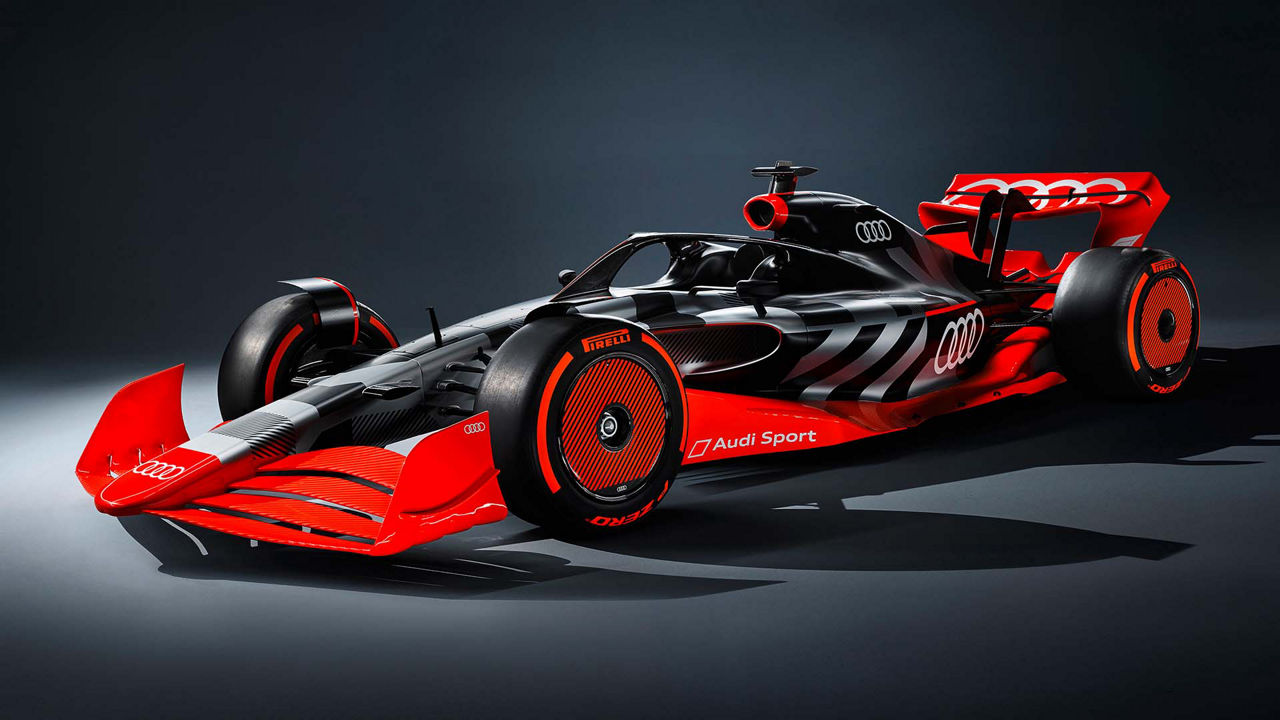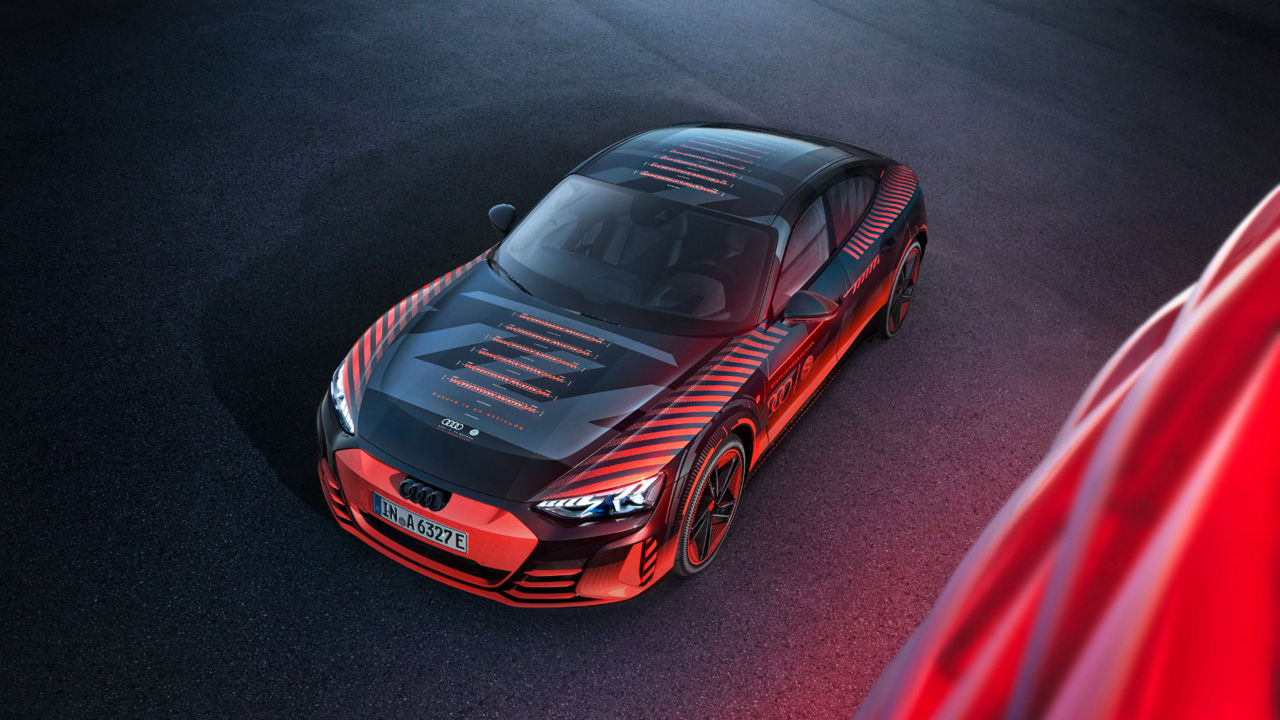
Straight to the title
The Audi 200 quattro Trans Am caused quite a stir: firstly, there was its imposing appearance, because at 4.89 metres long and 2.03 metres wide, it is still Audi’s largest racing car to this day. But the technology was also extraordinary. Local observers in the USA initially wondered why Audi was using a 2.1-litre five-cylinder engine against the eight-cylinder engines from the competition. The initial amazement quickly grew into the realisation that the powerful turbocharged engine in combination with four-wheel drive was successful. Eight race victories, including two 1-2 results, were on Audi’s balance sheet by the end of 1988. The successes were shared by the four-time winner Hans-Joachim Stuck, Walter Röhrl, who competed sporadically with two first places, and Hurley Haywood, who also clinched two wins. In the end, the American Haywood also won the drivers’ title, while Audi took the manufacturers’ title.

The 1988 Trans Am champion: Hurley Haywood in the Audi 200 quattro Trans Am
Race car with cult character
Following a change in the regulations of the Trans-Am series, Audi switched to the IMSA sports car scene on short notice. For the GTO category, with its more liberal technical regulations, the engineers developed a prototype with a tubular frame based on the Audi 90. The highly-charged five-cylinder engine with a four-valve cylinder head produced up to 720 hp. The characteristic chirp of the blow-off valve of its turbocharger gave the fans goose bumps every time the sound echoed from the car. Naturally, Audi also relied on quattro four-wheel drive in this racing car. In the end, seven victories were the result. The fact that Hans-Joachim Stuck did not win the title was mainly due to Audi’s decision not to compete in the two endurance races at Daytona and Sebring after the late switch to this racing series and in view of the costly new development at the beginning of the season. Nevertheless, the title fight remained open until the finale after a strong season for Audi.

The race debut of the Audi 90 quattro IMSA GTO on the streets of Miami in 1989, Hans-Joachim Stuck ahead of Hurley Haywood


Hans-Joachim Stuck in front of his teammates Frank Jelinski and Walter Röhrl at the DTM season finale in 1990. A 1-2-3 victory for Audi and the championship title for Stuck
Hans-Joachim Stuck in front of his teammates Frank Jelinski and Walter Röhrl at the DTM season finale in 1990. A 1-2-3 victory for Audi and the championship title for Stuck
The start of a long tradition
Audi and the DTM – this was to be one of the great chapters of success. This involvement began in 1990 with the Audi V8 quattro. The racing car was derived from a luxury saloon and was an unusual sight on the starting grid, if only because the competition favoured smaller mid-range models. The racing car from Ingolstadt had a 3.6-litre naturally aspirated V8 engine with an output increased from 420 to 470 hp between the first race in 1990 and the final one in 1992. The V8 quattro was the only car in the field to have four-wheel drive. Hans-Joachim Stuck celebrated seven victories during the debut season in 1990. The son of former Auto Union driver Hans Stuck thus clinched the title. The consistent marketing of the DTM resulted in a significant popularity increase during this period and thrilled the ever-growing on-site attendance, as well as the fans of the live television broadcasts. In 1991, up-and-coming driver Frank Biela won the DTM title at the wheel of an Audi V8 quattro. No manufacturer had ever won two titles in a row in the series before. After withdrawing from the series in 1992, Audi returned to the DTM from the 2004 season onwards and continued its run of success.

The 1991 DTM champion: Frank Biela in the Audi V8 quattro
Touring car success around the world
From 1993, Audi turned its attention to the Class 2 touring cars of the time, whose production-based models were becoming increasingly popular in more and more countries. The two-litre naturally aspirated engines of these super touring cars produced around 300 hp. Audi began this era with the 80 quattro, which won the French championship in 1993. The successor, the Audi 80 competition, won the title in Italy a year later. However, the heyday of the brand began with the A4 quattro launched in 1995. In its debut season, it won the FIA World Touring Car Cup and the Italian championship. Audi then achieved a legendary series of international successes in 1996, with the A4 quattro winning the titles in Australia, Belgium, Germany, Great Britain, Italy, Spain and South Africa, as well as the Guia Race on the streets of Macau. However, these successes put Audi at an ever-greater disadvantage in terms of weight penalties, which were continuously increased by the regulations. In 1998, four-wheel drive was finally banned in FIA circuit racing series. Although Audi still developed a front-wheel drive version and customers continued to be successful with the A4 quattro on a national level, Ingolstadt and Neckarsulm were already preparing for the next era – the Le Mans 24 Hours.

Emanuele Pirro won the 1996 German Super Tourenwagen Cup – one of seven national titles for the Audi A4 quattro that year
Gallery
